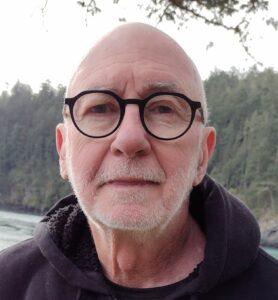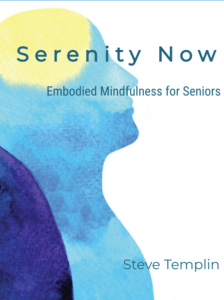In the previous post, I shared about my loss of hope for a change in human consciousness that would support a more just and sustainable future for us and our planet.
What I’m sharing about dealing with painful loss can realistically be applied to any emotional experience that’s painful. And this same approach can be applied to dissolving physical pain as well.
This is a neurological perspective on pain. The gist of which is that all pain, whether emotional or physical, is experienced in the brain. If we can change the brain, we can change our perception of pain.
The key to changing how the brain is functioning involves how we pay attention. What we notice isn’t as important as how we notice …. how we use our attention.
While this post focuses on the resolution of emotional and physical pain, it’s also potentially about much more. These same tools can also support us living in a more open-hearted and connected way with ourselves, our relationships, and our environment.
Rigid Attention Syndrome
When we’re threatened or under stress, our hormones shift, and our focus narrows and sharpens, mentally and visually, while our muscles tense to prepare us for action … and survival. Then, when the stress has passed, our brain ideally shifts gears, and we return to a more relaxed, easy-going state.
You’re not supposed to be in the survival brain state when you want to appreciate a sunset, communicate openly with a loved one, sleep soundly. or live a creative, authentic, and joyful life.
Unfortunately, when stress is ever-present the brain can get stuck in that over-focused, tense, and anxious survival state. That’s a resourceful state to address periodic stressors, but when we’re stuck in it, it destabilizes brain function and sensitizes the brain to create physical or emotional symptoms. Psychologist and biofeedback pioneer Les Fehmi, Ph.D. named this state, Rigid Attention Syndrome (RAS).
This over-focused, tense, and chaotic brainwave state is the very state that mitigates against our capacity for letting go of emotional or physical pain and becoming more intuitively aware, open-hearted, and creative.
Fortunately, our brains have the capacity to shift away from the over-focused, rigid attention pattern that generates pain, anxiety, and stress related illness. The shift or reset isn’t triggered by how we think or what we know, it’s activated by how we use our attention to experience the physical space we feel within and around our body.
Getting Out of Your Head (and ego) for A Change
When we learn to use our attention to notice the physical space inside and around our body with curiosity our neurology immediately improves. As desirable as this is it can be challenging because staying stuck in your head, and staying stuck in thought, is part of our old survival programming.
When we curiously attend to bodily felt experience, or space in or around our body, heart rate variability and the orderliness of brainwaves improve. As our brain and nervous system becomes more orderly the stress response and painful experience begins to dissolve.
Interestingly our sense of self also tends to undergo a transformation. As we connect with our inner experience of feelings and sensations (that’s space experienced inside the body) more consciously and create more neurological order we tend to feel more connected to ourselves.
Not only does increased heart-brain coherence and enhanced neurological order bring us closer to ourselves but it also enhances our sense of connectedness to others and to the natural environment. We could say that this state reduces our ego driven sense of separation from self, others, nature, and spirit.
Once again, if we can change the brain we can alter our perception of pain. An increase in heart rate variability and the establishment of synchronized alpha waves across the cerebral cortex mitigate against pain and other stress-induced illness.
A Brain and Pain Changing Exercise
What I’m sharing here may sound simple, maybe too simple, yet it’s supported by peer reviewed neurological research and decades of clinical success. This will be a quick introduction to the technique, actually a combination of techniques, that I’ve found to be most predictably effective for reducing or resolving either physical or emotional pain.
If you decide to take the time to notice sensations in your right index finger, tingling, warmth, or whatever is there, your brainwaves will become more orderly and your autonomic nervous system will become more stable within seconds. Said another way, just become aware that your right index finger occupies a volume of space that can be sensed or felt directly.
Research and experience confirm that it takes time, sometimes a number of minutes, other times a number of days or weeks, for chaotic brainwave patterns to stabilize and for pain and other symptoms to back off consistently. With time and experience the brain will become more stable and painful experience will begin to dissolve while new awareness in the form of insight and heart felt intuition will increase.
Here’s a brief sampling of a guided exercise that will give you a better sense of what I’m talking about. It will take a few minutes. During this process your brain will begin to reset.
Your brainwaves will most likely respond by shifting into a synchronized alpha rhythm, and your vagus nerve will be activated as your autonomic nervous system becomes more orderly. This is the brain state that dissolves the experience of physical and emotional pain while also enhancing open hearted perception and communication.
The key ingredient here will be the experience of physical space …. which is a feeling experience. It’s one thing to think about your heart, but quite another to experience your heart occupying space in the center of your chest. It’s that feeling experience that changes the brain.
You can read my instructions below one at a time and then take roughly 15 seconds to attend to what I’ve suggested. Then move on to the next instruction. The 15 seconds is a crucial element of this exercise.
Please sit quietly and close your eyes once you’ve read each instruction. Allow yourself to move through these instructions without using any effort to understand the instruction or to use any effort in performing the request.
We do this exercise with an attitude similar to that produced by a glass of wine on an empty stomach. No, don’t drink in preparation for this exercise, but choose to let go of any familiar sense of effort, or striving to get it right. Just let go and notice. Surrender. I’ll use the word ‘imagine’ to suggest the easy-going and effortless style of attention that works best.
If this exercise engenders any significant emotional distress please stop. Distress usually signifies that we’re shifting out of a survival oriented disconnected state into a more connected feeling state (which is good) but is an indication that more subtle instruction is needed to keep the experience comfortable and helpful.
Can you imagine feeling the space that your right hand occupies? Notice any sensations or feelings while you’re gently aware of any other thoughts, feelings, imagery of memories that emerge. Control nothing while just noticing. (do this for 15 seconds)
Can you imagine feeling the volume of space that your left hand occupies? Notice any sensations or feelings while you’re gently aware of any other thoughts, feelings, imagery of memories that emerge. Control nothing while just noticing. (do this for 15 second
Can you imagine feeling the space that’s occupied by both hands simultaneously? Notice any sensations or feelings while you’re gently aware of any other thoughts, feelings, imagery of memories that emerge. Control nothing while just noticing. (do this for 15 seconds)
Can you imagine feeling the space, the distance that’s between your hands, which may be perceived as an absence? Notice any sensations or feelings while you’re gently aware of any other thoughts, feelings, imagery of memories that emerge. Control nothing while just noticing. (do this for 15 seconds)
Can you allow yourself to simply notice the experience of your heart? Just notice curiously. Whether or not you feel your heart beating is okay. Notice any sensations or feelings while you’re gently aware of any other thoughts, feelings, imagery of memories that emerge. Control nothing while just noticing. (do this for 15 seconds)
Can you effortlessly become aware of the space inside your chest where you experience or sense your heart? Notice any sensations or feelings while you’re gently aware of any other thoughts, feelings, imagery of memories that emerge. Control nothing while just noticing. (do this for 15 seconds)
Can you once again notice effortlessly that the physical space that your heart occupies sits between the space occupied by your hips and the space occupied by your cranium? Notice any sensations or feelings while you’re gently aware of any other thoughts, feelings, imagery of memories that emerge. Control nothing while just noticing. (do this for 15 seconds)
Can you effortlessly become aware of your heart and allow a heartfelt feeling of care for someone or something to emerge? Notice any sensations or feelings while you’re gently aware of any other thoughts, feelings, imagery of memories that emerge. Control nothing while just noticing. (do this for 15 seconds)
And finally, if you have any sense of increased ease or of something helpful or good, can you simply appreciate the felt sense of that experience? (do this for 15 seconds)
This was a very brief example of using your attention in an open and diffused way that doesn’t mimic the cultural norm of narrow and over-focused attention. This more open and relaxed attention style doesn’t perpetuate the stress response and pain, whether it’s physical or emotional.
Once we get a feel for this new attention style and some practice under our belt it supports the experience of a world view where the ego’s sense of separation is reduced while a felt sense of interconnectedness and community are enhanced.
*The exercise above was a combination of HeartMath, Somatic Focusing, and Open Focus practices.


 Steve is a retired Doctor of Oriental Medicine, Acupuncture Physician, and HeartMath Trauma-Sensitive Certified Practitioner with over 35 years of clinical experience in the fields of Energy Medicine, Energy Psychology, and Biofeedback.
Steve is a retired Doctor of Oriental Medicine, Acupuncture Physician, and HeartMath Trauma-Sensitive Certified Practitioner with over 35 years of clinical experience in the fields of Energy Medicine, Energy Psychology, and Biofeedback. 